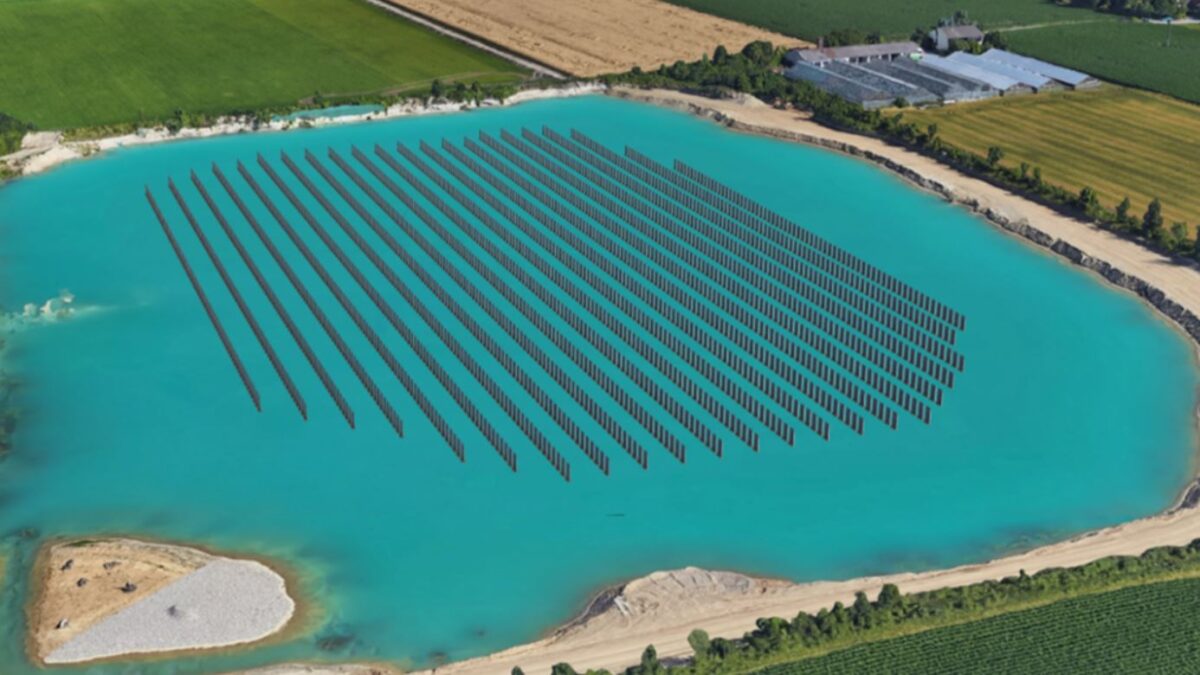From pv magazine Germany
Floating PV installations are still quite rare and generally small in size in Germany. Some megawatt-sized projects are now being developed or built, but the German Renewable Energy Act (EEG) stipulates that only a maximum of 15% of a water surface can be covered with solar modules. Developers must also maintain a minimum distance from the shore, which makes many floating solar projects difficult or even uneconomical.
However, German startup Sinn Power has found a solution to make some projects viable. It plans to build what it describes as the world's first floating PV system with solar modules installed vertically.
The project will be built on a lake at a gravel pit in Gilching, Bavaria. The plant is still in the planning phase, but it has strong support from the regional agency gwt Starnberg GmbH, the Starnberg district office, and the municipality of Gilching.
Anchoring and lake preparation work at the Gilching gravel pit is scheduled to begin on Aug. 1. Construction of the overwater 1.8 MW solar installation itself will begin in September.
The company will use its own patented 2,500 “Floating-SKipp” mounting systems for the project. They will be placed in an east-west direction. Almost 2,500 solar modules will be installed for the PV system. Sinn Power said that the distance between the rows of modules will be about 3.90 meters.
The proposed system architecture reduces the utilized surface area. More solar modules can be installed without exceeding EEG requirements, so smaller bodies of water will also suitable for such floating PV systems.
“The vertical installation of these modules revolutionizes the use of artificial inland waters for the generation of solar energy and redefines the legal regulation of 15%,” said the company.
The east-west orientation of the solar modules shifts electricity production toward the morning and afternoon. Most of the solar energy will be used directly at the Gilching gravel plant. The surplus will be injected into the grid.
“This project is innovative.Relatively easy to carry out, as it does not require any land and adapts perfectly to our production plant, which operates during the day, especially in the sunniest months of March to December, so it can use a much of the electricity generated,” said Gottfried Jais, the director of Kies- und Quetschwerk Jais, which operates the gravel pit. “We are following the topic of energy storage and conversion with interest and are eager to see whether there will soon be workable and economical solutions here, too.”
This content is protected by copyright and may not be reused. If you want to cooperate with us and would like to reuse some of our content, please contact: editors@pv-magazine.com.




The site is so close to Glitching, Germany that you’d think it would be a capital of sideband attacks against EU or München. That said, how is it operating a gravel pit is a thing? Groundwater preservation stuff? Awesome enough interpretation of the 3% coverage law, I hope it helps preserve sweet water in the region. (My local creek stinks.)
If the technical difficulties can be overcome, this could be interesting.
Anchoring the floating pontoons in such a way that maintains the vertical aspect of the panels when the wind is blowing is going to be tricky.
I would’ve thought an East-West array with a smaller overall footprint, would provide a higher yield.